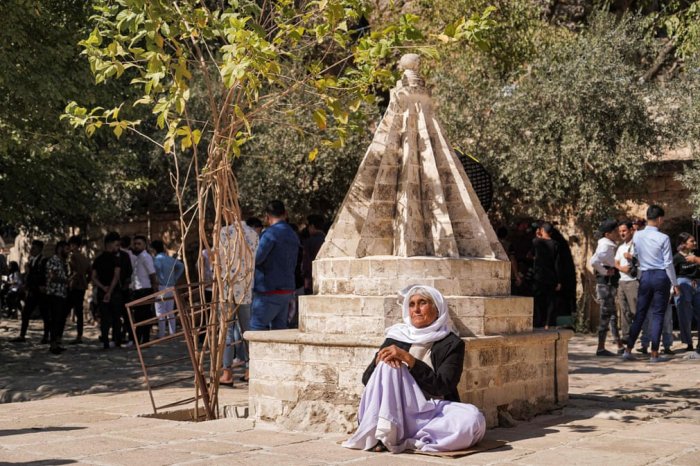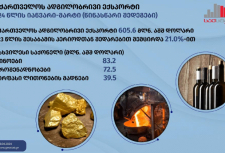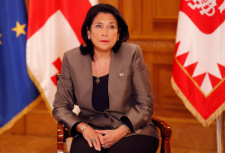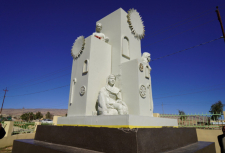Operation “Iraq Freedom” (OIF) - how it affected the Yazidis

In March 2003, the United States invaded Iraq to overthrow the regime of Saddam Hussein. As we know, there were many reasons for this, but in this article, I will not touch on the topic of why the United States invaded Iraq. The question here is more about how the Yezidis lived under Saddam and after him.
Saddam's rule, to put it mildly, cannot be called democratic, he kept all citizens in check and did not give free rein to separatism and the opposition.
As for the Yezidis, they also faced several problems. The Yezidis lived in isolation and had their own villages, but many of their villages were destroyed by Saddam's regime. The Baathists created collective villages and forcibly relocated the Yezidis from their historical villages, which were destroyed.
According to Human Rights Watch, the Yezidis were in the process of Arabization under Saddam Hussein between 1970 and 2003. In 2009, some Yazidis who had previously lived in this process complained that the Kurds were forcing the Yazidis to identify themselves as Kurds.
Like many, the Yezidis hoped that peace and prosperity would come to Iraq after the overthrow of Saddam's regime, but as usually happens, the desired collided with reality.
I want to make a small lyrical digression of the events before the US invasion of Iraq, there were quite a few opponents among the United States who warned that several other problems would appear with the fall of Saddam's regime. I would like to draw your attention to the fact that numerous experts, including Bush's adviser, General Brent Scowcroft, former Commander-in-chief of the Central Command of the US Armed Forces Anthony Zinni and some other senior military officials spoke about the huge risks associated with the fall of the regime in a country with a complex ethno-confessional structure.
The ethno-confessional factor was practically ignored on the agenda of the invasion of Iraq, which brought instability and activity of radical Islamic groups to this region.
One of the representatives of the national minority of Iraq, a representative of the Chaldean Church, described the situation after the fall of Saddam's regime as follows: "... Various terrorist groups immediately appeared, the influence of Muslim religious movements increased. Minorities in Baghdad, Basra, Mosul, especially the Mandaeans and Yezidis, were subjected to terrible persecution, they had to abandon their homes and property. Those who sold alcohol were attacked by religious fanatics, many priests were killed along with their families. It would not be an exaggeration to say that this was the most terrible period in the modern history of Iraq."
It turns out that maintaining the Saddam regime would be disastrous for the Yezidis in the sense that they wanted to Arabize them and force them to identify themselves as Kurds. On the other hand where the regime fell, and in 2014 the genocide of the Yezidis was committed. Guessing and saying that the Yezidis would have lived better under Saddam is not a fact, since the rule of a tyrant is always unstable.
One thing can be emphasized for sure, that Operation “Iraq Freedom” brought only a dark future, both for the Yezidis and for the Region as a whole.
Tags: #yazidisinfo #newsyazidi #aboutyazidi #iraqyazidis
Operation “Iraq Freedom” (OIF) - how it affected the Yazidis

In March 2003, the United States invaded Iraq to overthrow the regime of Saddam Hussein. As we know, there were many reasons for this, but in this article, I will not touch on the topic of why the United States invaded Iraq. The question here is more about how the Yezidis lived under Saddam and after him.
Saddam's rule, to put it mildly, cannot be called democratic, he kept all citizens in check and did not give free rein to separatism and the opposition.
As for the Yezidis, they also faced several problems. The Yezidis lived in isolation and had their own villages, but many of their villages were destroyed by Saddam's regime. The Baathists created collective villages and forcibly relocated the Yezidis from their historical villages, which were destroyed.
According to Human Rights Watch, the Yezidis were in the process of Arabization under Saddam Hussein between 1970 and 2003. In 2009, some Yazidis who had previously lived in this process complained that the Kurds were forcing the Yazidis to identify themselves as Kurds.
Like many, the Yezidis hoped that peace and prosperity would come to Iraq after the overthrow of Saddam's regime, but as usually happens, the desired collided with reality.
I want to make a small lyrical digression of the events before the US invasion of Iraq, there were quite a few opponents among the United States who warned that several other problems would appear with the fall of Saddam's regime. I would like to draw your attention to the fact that numerous experts, including Bush's adviser, General Brent Scowcroft, former Commander-in-chief of the Central Command of the US Armed Forces Anthony Zinni and some other senior military officials spoke about the huge risks associated with the fall of the regime in a country with a complex ethno-confessional structure.
The ethno-confessional factor was practically ignored on the agenda of the invasion of Iraq, which brought instability and activity of radical Islamic groups to this region.
One of the representatives of the national minority of Iraq, a representative of the Chaldean Church, described the situation after the fall of Saddam's regime as follows: "... Various terrorist groups immediately appeared, the influence of Muslim religious movements increased. Minorities in Baghdad, Basra, Mosul, especially the Mandaeans and Yezidis, were subjected to terrible persecution, they had to abandon their homes and property. Those who sold alcohol were attacked by religious fanatics, many priests were killed along with their families. It would not be an exaggeration to say that this was the most terrible period in the modern history of Iraq."
It turns out that maintaining the Saddam regime would be disastrous for the Yezidis in the sense that they wanted to Arabize them and force them to identify themselves as Kurds. On the other hand where the regime fell, and in 2014 the genocide of the Yezidis was committed. Guessing and saying that the Yezidis would have lived better under Saddam is not a fact, since the rule of a tyrant is always unstable.
One thing can be emphasized for sure, that Operation “Iraq Freedom” brought only a dark future, both for the Yezidis and for the Region as a whole.
Tags: #yazidisinfo #newsyazidi #aboutyazidi #iraqyazidis

























